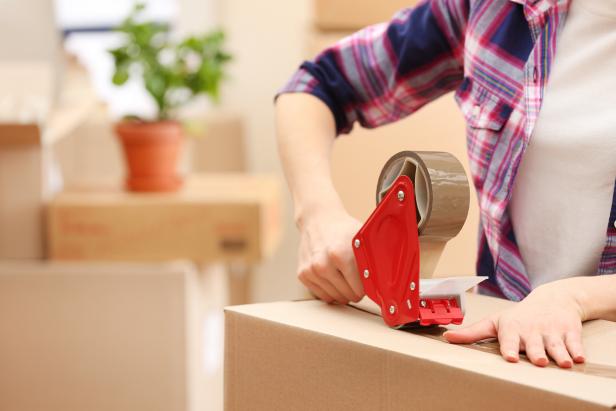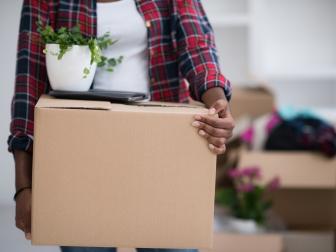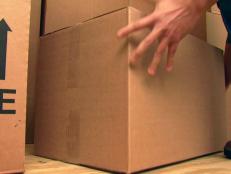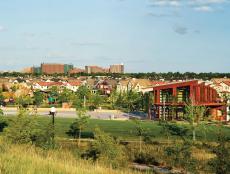Moving Day Tips: How to Pack for a Move
These 10 packing tips will help you move more efficiently and smoothly.
The big day is getting closer. It's time to get organized for moving day and then get packing.

Shutterstock/Africa Studio
While a certain amount of stress is inevitable with any move, some simple tips on how to pack for a move can make getting out the door of your old place and settled into the new home go more smoothly.
15 Packing Tips for Your Move
- Clear things out. If you haven't used it, get rid of it by creating a "charity" and a "recycle" box to help in sorting. Consider holding a garage sale or donate anything you don't want to move.
- Make a moving folder or booklet. Include an inventory of your household items with a video or photos, particularly big-ticket items like antiques or fine china, and call your insurance company to make sure your valuables are covered in the case of loss or breakage.
- Look for free supplies. Do any neighbors have packing boxes they no longer need? Look for offers of free boxes in local social media groups.
- Keep size and weight in mind. Pack heavy items in small boxes and light items in big boxes.
- Prepare a "load-last" carton. In a special box, pack items you want access to right away, like a coffee maker and coffee supplies, paper plates, cups, paper towels, flashlight, basic tools and anything else you may not want to hunt for on moving day. Place difficult-to-locate items such as hardware and the remote control in a plastic sandwich bag. Add a label and put it in your "load-last" carton that goes on the moving truck last.
- Get the children involved. Have them decorate signs with their names on them to hang outside their bedrooms at the new house. Not only does it help get them involved in the moving process, it will also help movers identify where the kids' boxes should be placed.
- Clearly label boxes. Be sure to label each box on both the top and sides, clearly indicating the contents and the room in which it belongs. Use a dark-colored marking pen that is easy to read.
- Protect your mattresses and furniture with old sheets. Covering these items with fitted sheets works especially well.
- Place a clean set of sheets and bedding in a dresser drawer in each bedroom. When your furniture arrives at your new home, you can get fresh bedding without having to find the carton in which it was packed.
- Wrap breakables in colored wrapping paper or tissue paper. Do this before you place them in the moving box. The brightly colored paper will draw attention to the item and prevent them from being accidentally thrown out with the packing paper.
- Fill space in boxes with soft items on hand. Use blankets, pillows, towels, scarves and linens to fill empty space in boxes when packing fragile items. Using these items instead of paper or bubble wrap is environmentally conscious and saves money, plus your new basement won't be filled with packing supplies.
- Pack valuables separately. Collect valuable items such as jewelry or heirlooms and keep them separate from the rest of your packed belongings so you don’t risk losing them.
- Protect your tech. Back up your computer files on an external drive or use a cloud-based backup service. You should plan to take your computer equipment in the car or whatever mode of transportation you will be using to get to your new home. Exposure to extreme temperatures can damage your computer equipment.
- Organize important documents. Carry documents such as your will, passports, deeds and financial statements with you when move; make copies that you can pack with your household goods, but carry the originals with you.
- Take special care to move your houseplants. Prune houseplants about two weeks before the move. You may want to consult a florist or learn more about your houseplants here. One week before the move, place them in a black plastic bag along with bug/pest strips, conventional flea collars or bug powder. Close the bag and place in cool area overnight to kill any pests on the plant or in soil. The day before the move, place plants in cardboard containers. Hold them in place with dampened newspaper or packing paper. Use paper to cushion leaves, and place a final layer of wet paper on top to keep them moist. Punch air holes in the top before loading into your car or moving truck. If you are moving out of state, you'll want to check with the local U.S. Department of Agriculture office for regulations regarding moving plants from one state to another.
- Properly dispose of hazardous and flammable items. Know the items that movers won't transport such as paint, chemicals, aerosol cans and oil, as well as weed killers. Discard propane tanks from grills.
More Moving Advice
Moving Checklist
Use this week-by-week checklist to plan your move to a new home.












































